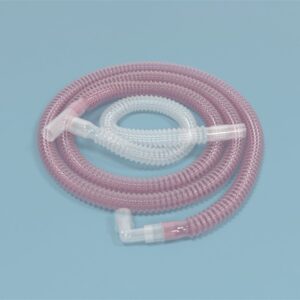$345.00 – $1,890.00Price range: $345.00 through $1,890.00
Euthanasia Chambers are simple chambers that are quick and easy to use and are made of complete acrylic plastic for humane euthanasia of test subjects. Our euthanasia chambers include the container, lid, locking clamp, and inlet & outlet with stopcock all 5/16″ barbed fittings fit for standard CO2 gas tubes. We offer euthanasia chambers for a range of species in different sizes.
ConductScience offers Euthanasia Chambers. The estimated delivery time is 2 weeks after receiving your order.

ConductScience is a company specializing in providing high-quality research equipment, lab supplies, and scientific services for the life sciences community.



Model | Species | Dimensions (cm) | Volume (L) |
|---|---|---|---|
CS-EUTH1A | Mice | 12 x 10 x 12 | 1.43 |
CS-EUTH1B | Rat [Up to 300g] | 23 x 11 x 17 | 4.29 |
CS-EUTH2A | Mice and Rats [Up to 500g] | 27.9 × 14.6 × 1 7.8 | 7.25 |
CS-EUTH2A-2 | Rat, Guinea Pig [Up to 350g] Two Compartments | 55 x 18 x 18 Each compartment dimensions: 27 x 18 x 18 | 17.78 |
CS-EUTH-3 | Rat, Guinea pig [Up to 350g] | 40.6 x 20.3 x 20.3 | 16.8 |
CS-EUTH4 | Large Rodents Rabbit [up to 2000g] | 50.8 x 30.48 x 38.10 | 58.99 |
CS-EUTH5 | Large Rodents Rabbit [up to 4000g] | 71.12 x 38.10 x 38.10 | 103.23 |
CS-EUTH6 | Guinea Pig | 101.6 x 50.8 x 20.32 | 104.87 |
CS-EUTH7 | Customizable Model* | -- | -- |
*To request a quote for the customizable model, please contact us.
Euthanasia is an act of facilitating a peaceful passing in an animal by inducing rapid loss of consciousness, which ultimately results in the cessation of life with minimal discomfort or distress. An acceptable method of euthanasia, as endorsed by the American Veterinary Medical Association, ensures swift unconsciousness and alleviation of pain and distress, followed by the cessation of respiratory and circulatory functions, as well as brain activity. The euthanasia chamber facilitates the humane euthanasia of laboratory rodents through CO2 inhalation. It is equipped with specialized fittings designed to accommodate standard CO2 gas tubes.
There are several methods for facilitating a peaceful passing in animals; however, an optimal euthanasia procedure aligns with specific criteria for the well-being of the animal, the employer, and the chemical utilized. Ideally, it should ensure the humane immobilization of the animal with minimal distress and the induction of rapid and irreversible insensibility with minimal discomfort. Furthermore, this technique should garner acceptance from both the general public and the individual administering the procedure. It should also be cost-effective and feasible for non-veterinary personnel to carry out with minimal training. Lastly, the choice of euthanasia agent is crucial. It should pose minimal or no risk to the operator and leave no residues or damage that could impede subsequent investigations or future use of the remains. Additionally, it should not generate any residues that could endanger other animals following the disposal of the deceased.
Considering all the aforementioned parameters for the optimal method of euthanasia, the inhalation of CO2 emerges as the closest approximation to this ideal. It reliably and swiftly induces unconsciousness with minimal distress to the animal. Moreover, it presents no significant safety hazards (Boivin et al., 2017).
The CO2 gas is introduced into the chamber, gently inducing a state of unconsciousness in the animal, ultimately resulting in a gradual and humane cessation of life.
The Euthanasia chamber is a specially designed instrument for CO2 euthanasia that allows euthanizing small lab animals with minimum pain and distress. It allows easy observation of animals with fully controllable CO2 flow rates.
Several studies have shown that CO2 causes pain and discomfort in animals, so its usage should be carefully examined (Conlee et al., 2005).
Air-Tight Construction: The box is meticulously crafted to eliminate any potential for air-leak, ensuring a secure and controlled environment.
Lid Superiority: Through our assessments, we’ve determined that a lid design proves more effective and tighter compared to an open front. This choice enhances the overall reliability and functionality of the chamber.
Two-Piece Chamber Design: This design has undergone thorough assays, and the final result indicates that it performs exceptionally well in preventing air-leakage, meeting the stringent requirements for a euthanasia chamber.
The most common method of humane euthanasia used for small animals involves carbon dioxide (CO2) inhalation. Although CO2 is generally regarded as a suitable agent for humane euthanasia in small animals when administered correctly, its acceptability depends on several key factors. The animals must be put to rest by trained personnel. During the euthanasia process, it is important to avoid mixing different species. Whenever feasible, animals should be euthanized individually. However, it is also common practice to euthanize animals in groups, provided that the chamber is not overly populated. It is advisable to ensure that the chamber is not overly crowded. Whenever possible, euthanasia should be conducted away from the animal room.
The pace at which CO2 is introduced is critical for humane CO2 application. Therefore, it is necessary to utilize a pressure-reducing regulator, flow meter, or restriction valve. A two-stage regulator offers the most precise control over flow rates. Initially, a regulator reduces the pressure in the tank to a predetermined level, and subsequently, a flow meter, flow gauge, or restriction valve delivers a precise CO2 flow to the euthanasia chamber. Adjusting the flow rate can expedite the process after the animals have reached an unconscious state, thereby minimizing the time to reach the desired outcome. An unconscious animal is described as experiencing a loss of the righting reflex or attaining lateral recumbency (Shomer et al., 2020).
The following formula determines the capacity of the euthanasia chamber:
Volume of the euthanasia chamber in liters = (Height in cm) × (Width in cm) × (Length in cm) /1000
The following assessment criteria are applicable to all species and end-of-life procedures.
Cardiac activity
Cardiac activity should be observed for a minimum of five minutes. The most accurate methods for diagnosis include direct palpation of the carotid or femoral artery pulses and direct palpation of the heart. Additionally, the absence of electrical activity in the heart can be confirmed using ECG.
Pupil response to light stimulation
This can be conducted by shining a bright light into the animal’s eyes. A neurological response is indicated by pupil constriction. Following end-of-life, the pupils will dilate and become unresponsive to light. Certain medications and experimental substances, such as anticholinergics like atropine, may also affect pupillary responsiveness or alter it in various ways.
Animals under deep sedation may exhibit shallow and irregular breathing patterns, which could be mistaken for a lack of spontaneous respiration. Consequently, the absence of spontaneous breathing should not be solely relied upon as the criterion for confirming end-of-life status.
Euthanasia is a critical research procedure. Several times scientists have to find out the effects of respiratory distress or hypoxia on the whole body in normal, diseased, or specific conditions such as injury, pregnancy, etc. In those cases, the euthanasia chamber helps establish hypoxic conditions for lab animals in a controlled environment with minimal pain. For example, Hallak et al. (2000) researched the damaging effects of maternal hypoxia on the fetal neurons and CNS. They utilized a euthanasia chamber as a hypoxia chamber and reported the significant neuronal damage with overall reduced brain and body size of the fetus. Similarly, Lauder et al. (2011) reported the reduced intraperitoneal adhesions with chitosan-dextran gel. For the observation of the results, they euthanized the rats using a euthanasia chamber.
Euthanasia is a delicate process that should be handled with care and empathy. Conversely, it requires proper technique and training. Below are some suggested precautions:
| Weight | N/A |
|---|---|
| Dimensions | N/A |
| Species | Large Rodents (Rabbits up to 2000g), Large Rodents (Rabbits up to 4000g), Mouse, Rat (up to 300g), Rat, Guinea Pig (up to 350g)- 1 Compartment, Rat, Guinea pig (up to 350g) – 2 compartments, Mice, Rat (up to 500g), Guinea pig |
You must be logged in to post a review.
There are no questions yet. Be the first to ask a question about this product.
Reviews
There are no reviews yet.